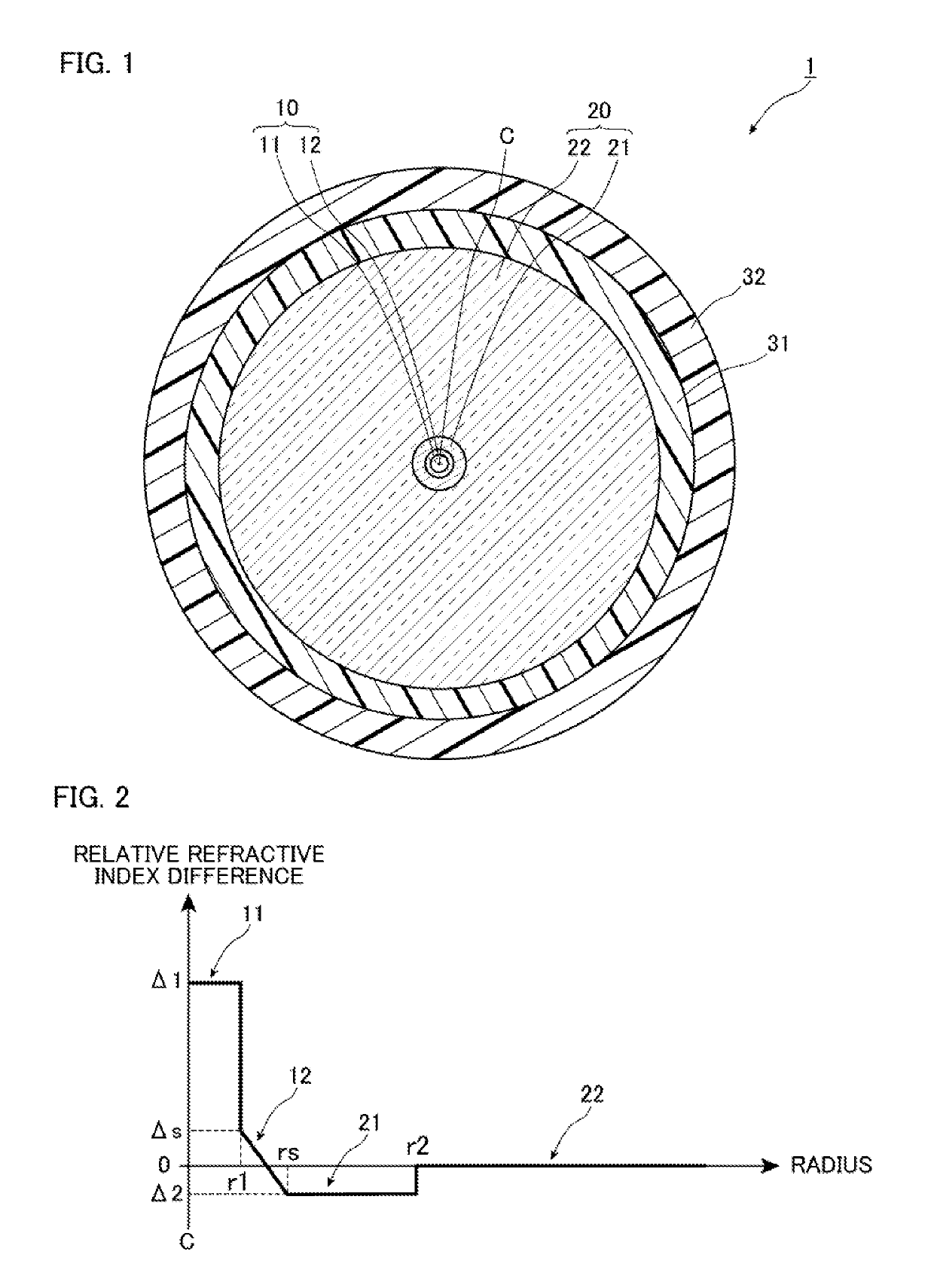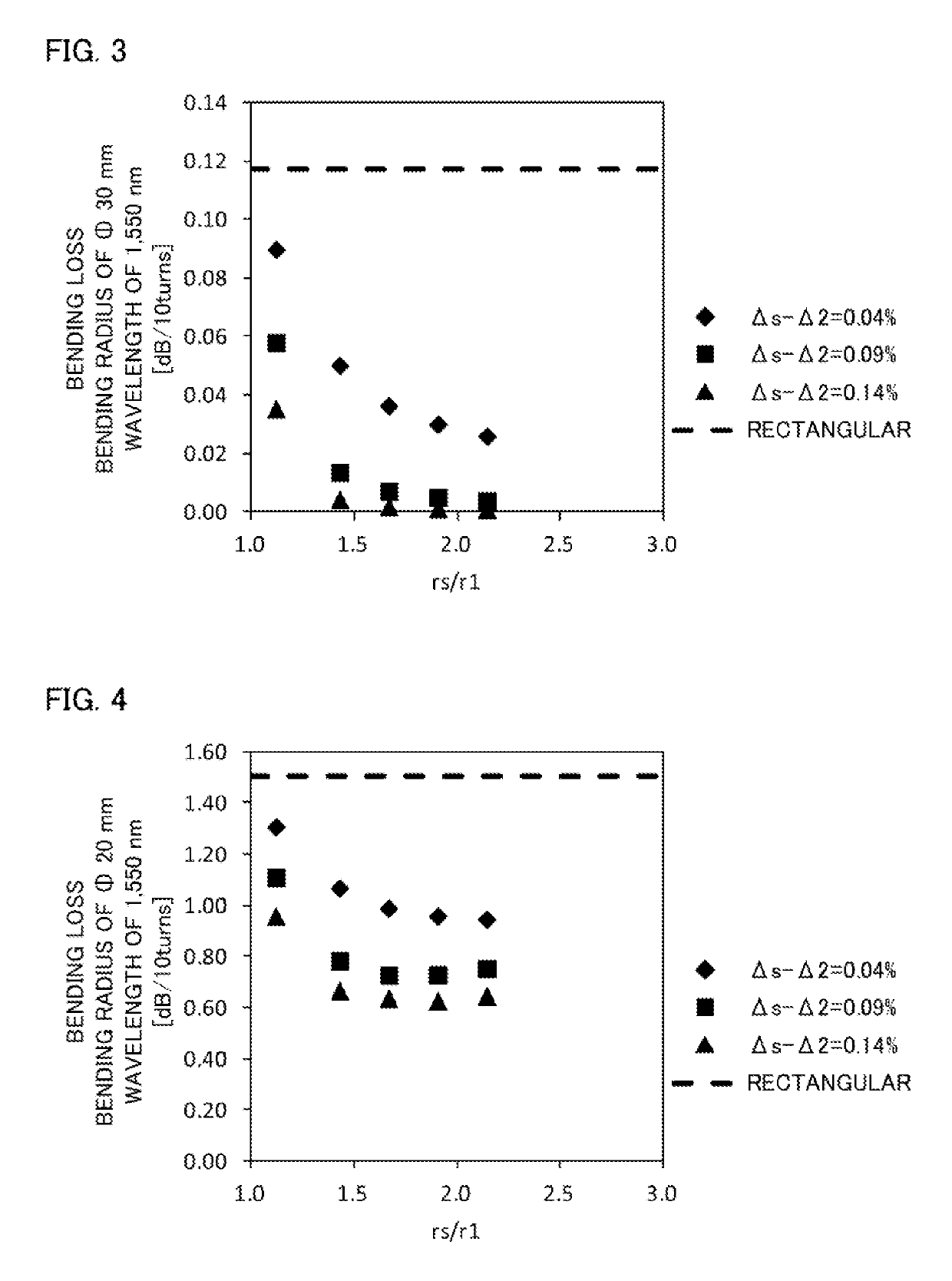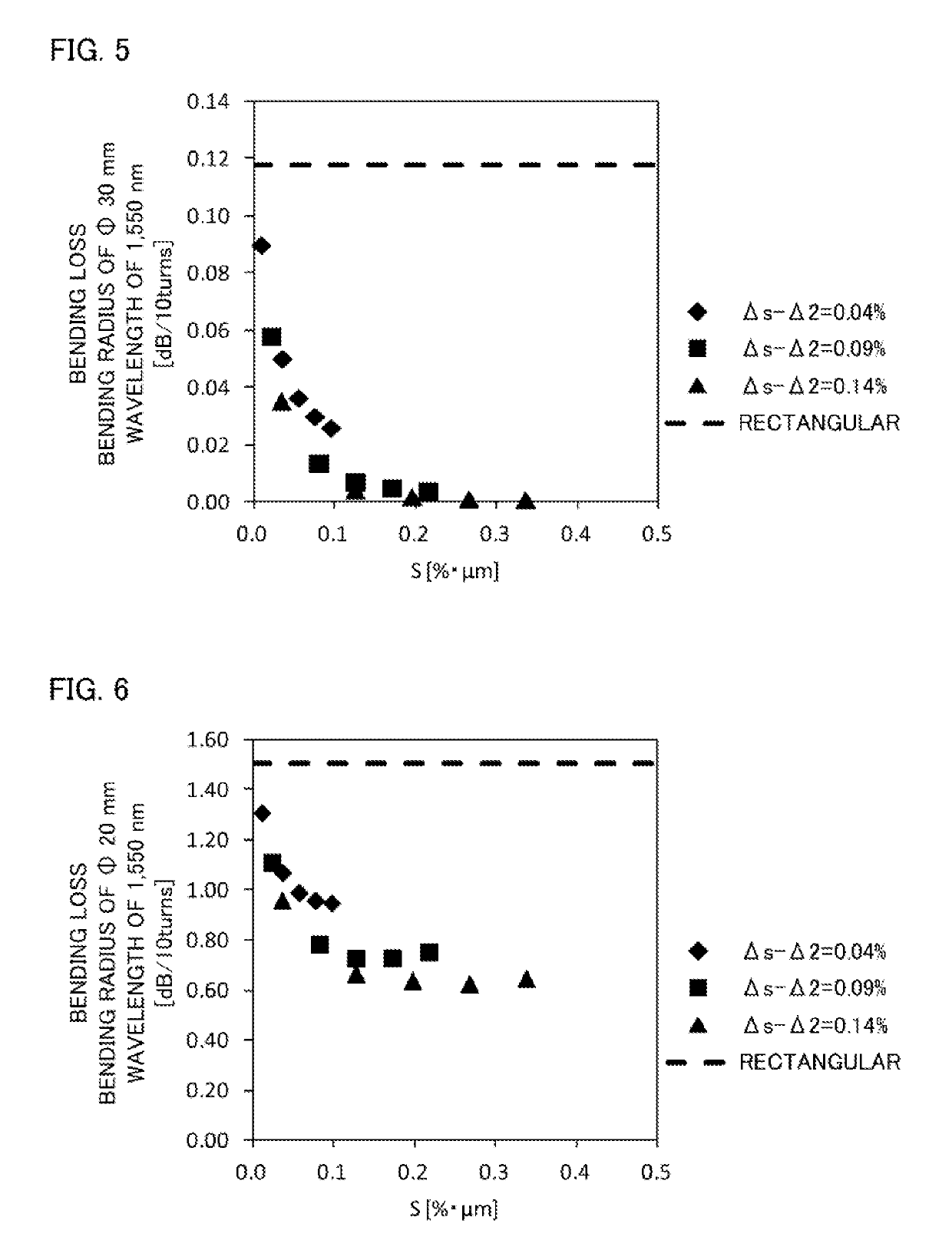Optical fiber
a technology of optical fibers and fibers, applied in the field of optical fibers, can solve the problems of easy cause of optical losses, complicated configuration of optical fibers, and increase costs, and achieve the effects of reducing bending losses, avoiding complicated configurations, and reducing the mode field diameter of ligh
- Summary
- Abstract
- Description
- Claims
- Application Information
AI Technical Summary
Benefits of technology
Problems solved by technology
Method used
Image
Examples
first embodiment
[0034]FIG. 1 is a diagram of the cross sectional structure of an optical fiber according to a first embodiment perpendicular to the longitudinal direction.
[0035]As illustrated in FIG. 1, an optical fiber 1 according to the embodiment includes a core 10, a cladding 20 surrounding the outer circumferential surface of the core 10 with no gap, an inner protective layer 31 covering the outer circumferential surface of the cladding 20, and an outer protective layer 32 covering the outer circumferential surface of the inner protective layer.
[0036]The core 10 is formed of an inner core part 11 including a center axis C of the core 10 and an outer core part 12 surrounding the outer circumferential surface of the inner core part 11 with no gap. The cladding 20 is formed of an inner cladding part 21 surrounding the outer core part 12 of the core 10 with no gap and an outer cladding part 22 surrounding the inner cladding part 21 with no gap.
[0037]FIG. 2 is a diagram of the refractive index prof...
second embodiment
[0050]Next, a second embodiment of the optical fiber according to the present invention will be described in detail with reference to FIGS. 10 to 17. Note that, components same as or equivalent to ones of the optical fiber 1 of the first embodiment are designated the same reference numerals and signs, and the overlapping description is omitted, unless otherwise specified.
[0051]FIG. 10 is a diagram of the refractive index profiles of a core 10 and a cladding 20 of an optical fiber according to the embodiment similarly to FIG. 2. As illustrated in FIG. 10, the optical fiber according to the second embodiment is different from the optical fiber 1 according to the first embodiment in that the refractive index of an inner cladding part 21 is equal to the refractive index of an outer cladding part 22.
[0052]Here, in the optical fiber according to the embodiment, simulation below is performed. In this simulation, the relative refractive index difference Δ1 of an inner core part 11 was 0.34%...
PUM
 Login to View More
Login to View More Abstract
Description
Claims
Application Information
 Login to View More
Login to View More - R&D
- Intellectual Property
- Life Sciences
- Materials
- Tech Scout
- Unparalleled Data Quality
- Higher Quality Content
- 60% Fewer Hallucinations
Browse by: Latest US Patents, China's latest patents, Technical Efficacy Thesaurus, Application Domain, Technology Topic, Popular Technical Reports.
© 2025 PatSnap. All rights reserved.Legal|Privacy policy|Modern Slavery Act Transparency Statement|Sitemap|About US| Contact US: help@patsnap.com



